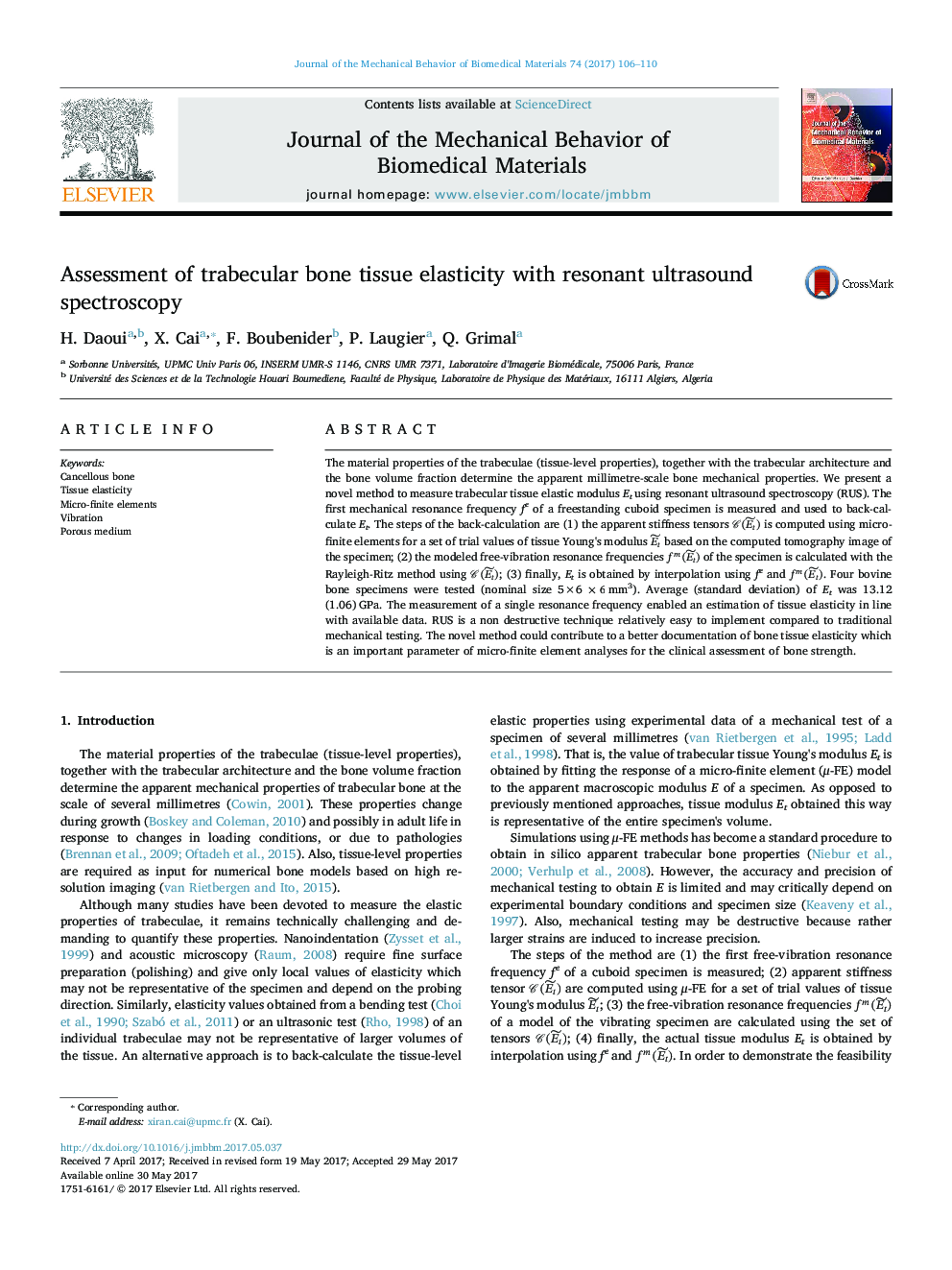| Article ID | Journal | Published Year | Pages | File Type |
|---|---|---|---|---|
| 5020400 | Journal of the Mechanical Behavior of Biomedical Materials | 2017 | 5 Pages |
Abstract
The material properties of the trabeculae (tissue-level properties), together with the trabecular architecture and the bone volume fraction determine the apparent millimetre-scale bone mechanical properties. We present a novel method to measure trabecular tissue elastic modulus Et using resonant ultrasound spectroscopy (RUS). The first mechanical resonance frequency fe of a freestanding cuboid specimen is measured and used to back-calculate Et. The steps of the back-calculation are (1) the apparent stiffness tensors C(EtË) is computed using micro-finite elements for a set of trial values of tissue Young's modulus EtË based on the computed tomography image of the specimen; (2) the modeled free-vibration resonance frequencies fm(EtË) of the specimen is calculated with the Rayleigh-Ritz method using C(EtË); (3) finally, Et is obtained by interpolation using fe and fm(EtË). Four bovine bone specimens were tested (nominal size 5Ã6 Ã6Â mm3). Average (standard deviation) of Et was 13.12 (1.06)Â GPa. The measurement of a single resonance frequency enabled an estimation of tissue elasticity in line with available data. RUS is a non destructive technique relatively easy to implement compared to traditional mechanical testing. The novel method could contribute to a better documentation of bone tissue elasticity which is an important parameter of micro-finite element analyses for the clinical assessment of bone strength.
Related Topics
Physical Sciences and Engineering
Engineering
Biomedical Engineering
Authors
H. Daoui, X. Cai, F. Boubenider, P. Laugier, Q. Grimal,
